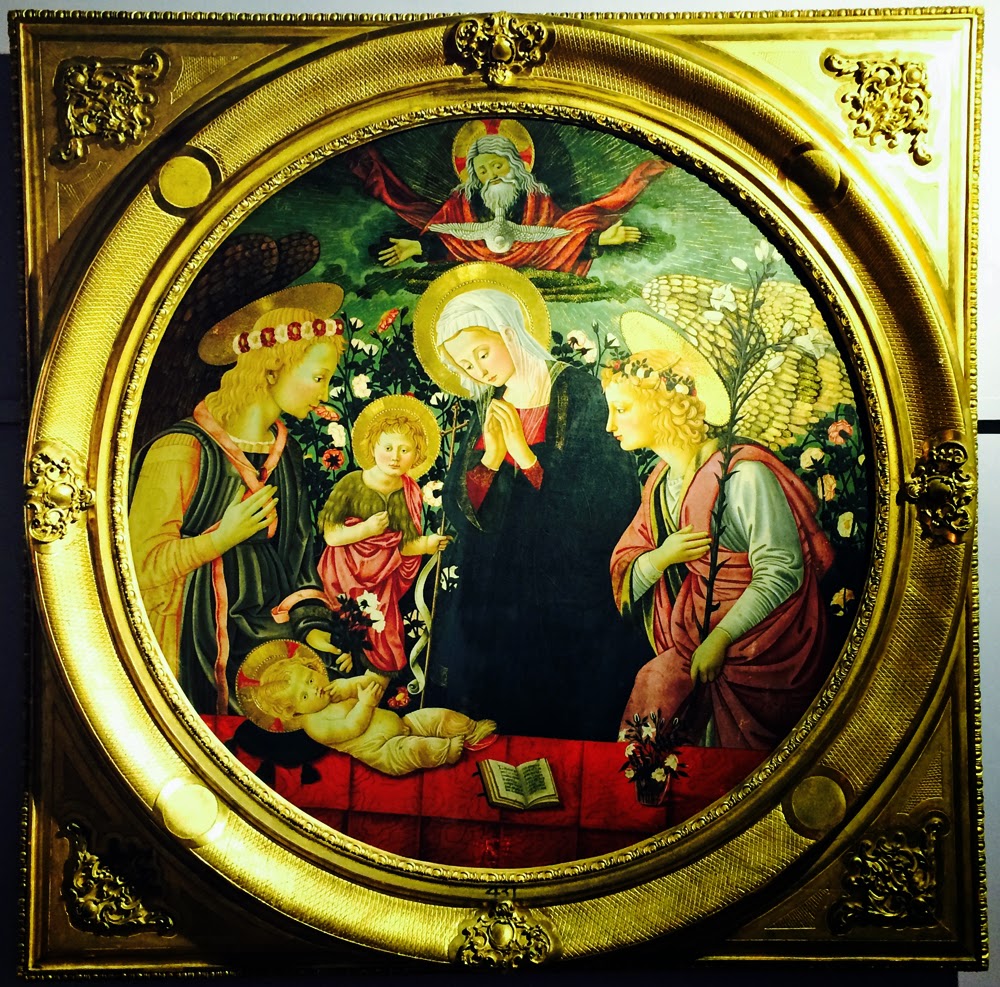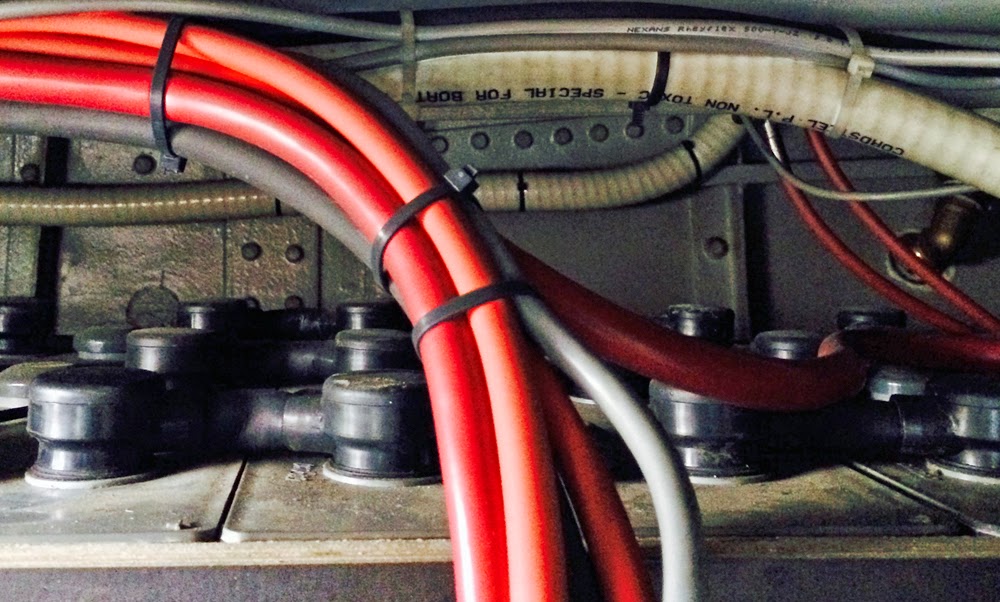On Friday, 4 July we had secured on the wall in front of Les Halles in the centre of Narbonne. Enroute our house battery had quickly died and would not take a charge and we had no domestic electricity unless we ran the generator or plugged into shore power. Fortunately, there are electrical pylons in the Narbonne moorages, so we plugged-in and I began troubleshooting. The 855 Amp-hour battery would not take a charge from shore power, from generator, nor from our portable 30 Amp charger. I suspected a dead cell or a loose connection.
We were in a wonderful place to be broken-down; Narbonne has a long and complex history dating to its founding in 118 BC by the Romans. The site was at the crossing of the Aude River and at the crossroads of Via Domitia, which joined Rome to Spain and of Via Aquitania, which led across to the Atlantic at Bordeaux. Narbonne was the most important Roman city outside of Italy.
A short distance from Zonder Zorg was a portion of Via Domitia excavated in 1997 in front of l’Hotel du Ville.
The City Hall is located in the former Archbishop’s Residence, which with other surrounding ecclesiastic buildings, has been recently restored and renovated. I recall wine buying trips through here in the 1990s and seeing huge works underway on the site. Housed in the buildings, besides the municipal offices are museums and galleries. We went exploring.
In the former Archbishop’s Residence is also located la Musée d’Art et d’Historie. At the reception desk we were offered an option of single entry for €4 or entry pass to seven sites for €9. We bought the passes and entered the museum.
In the galleries is a wide variety of paintings from the sixteenth century to the early twentieth. Among these are several of nautical topics, since Narbonne was once an historic Mediterranean port before the Aude shifted its course and the port silted up. Narbonne is now a dozen kilometres from the Mediterranean, across salt water marshes and ponds.
Also broadly represented are paintings of religious nature, such as this exquisite early sixteenth century rendering of the adoration of the Magi by Jan de Beer.
We were delighted with the collection of works by Hippolyte Lazerges, a native of Narbonne. As an adolescent his family moved to the new frontier, Algeria.
His talent for painting expressed itself primarily with religious subjects and these made him the toast of Parisian art public. However, his portraits and scenes of Algerian life showed his true virtuosity.
The Narbonne museum has a wonderful collection of these works by their native son.
Satiated with art, we went next door to la Musée Archélogique, which occupies an even larger portion of the former Archbishop’s Residence.
While the museum has extensive displays of Paleolithic, Bronze Age and Iron Age artifacts, we were most interested in the Roman collection from the third century BC onward. The frescoes taken from the walls of nearby Clos de la Lombarde are among the richest of the Gallo-Roman remains.
There are also extraordinary mosaics, including a large intact floor with an intricate geometric pattern.
There are also mosaics with more graphic designs.
Marble sculpture is well represented with both individual pieces, and groups.
An interesting piece is this fragment of wall decoration that depicts in high relief a fruit harvest.
No display of Gallo-Roman artifacts is complete without some amphorae. Many corners throughout the museum are stacked with a variety of these.
Also, there are many large dolia on display. An outstanding large intact dolium is from the third century BC and it predates the Roman settlement in Narbonne. It was found as it had used, buried up to its shoulders in an oppidium four kilometres north of Narbonne.
We found a large Roman ship’s anchor, but decided we were satisfied with the rather smaller one in Zonder Zorg.
From the Archeological Museum we went across to le Donjon Gilles Aycelin. This forty-two metre high fortified tower was built between 1295 and 1306 by the archbishop. A spiral staircase of 142 steps leads up past the treasury, the king’s room and the defence post. Above that is the terrace from which there is a splendid view over Narbonne. It also gives a fine perspective of cahtédrale Saint-Just et Saint-Pasteur, showing wonderfully its foreshortened shape. Built between 1272 and 1332, only the choir was completed before the parishioners refused to support any further construction. At 41 metres, the gothic choir is the highest in southern France and is among the highest fifteen in the world. It is higher than the 35 metres of Notre-Dame de Paris and the 38 metres of Notre-Dame de Reims.
In the other direction we had a fine view over the canal and down on Zonder Zorg. This reminded us that there was still some problem solving to sort through with our battery.
The battery is composed of twelve 2.1-volt gel cells wired for a nominal 24 volts at 855 Amp-hours and it was assembled in April 2013. It is designed to give at least ten years of service, so something was definitely amiss, and since it weighs well over half a tonne, it is not simply a matter of popping it out for a closer look. After I had done preliminary troubleshooting and tried main engine, generator, shore power and portable charger to add to the battery’s charge, I had emailed a report of the sequence of events and a variety of meter readings to SRF in Harlingen. We had gone museum visiting while waiting for a reply. The reply came with suggested remedies, tests and a variety of questions. I redid all the remedies and tests and answered all the questions in an email back to Friesland. The following day, while waiting for a response, we went off to continue our museum circuit.
We went to the cathedral for a look at its interior. It is amazingly disharmonious; with its great height and truncated length it is very much out of proportion.
More harmonious are the cloisters, which were begun in the early fourteenth century when work had stopped on the cathedral. These joined the cathedral through the gardens to the Archbishop’s residence.
Adjacent to the cloisters is the Annonciade Chapel and above it is another museum, le Trésor de la Cathédrale. It is in a vast room under a brick dome, which offers a wondrous acoustic effect, transmitting sound from corner to corner.
On display are a few of the luxuries the archbishops treated themselves to at the expense of the peasants. Among these are huge tapestries, such as this rendition of the creation woven in Flanders around 1500.
Other extravagances on display include portions of huge ninth century high relief panels of carved ivory that stand about two metres high and span many metres of width.
Filled with the excesses of the clergy, we headed along to the Horreum, which dates to the first century BC. This complex of subterranean galleries about five metres below ground is believed to have been storage rooms for ground-level markets and merchants’ warehouses. First rediscovered in 1838, they were partly explored beginning in 1935. While they are still being explored, charted and cleared, they were opened to the public in 1976.
Thus far two adjoining wings, one of fifty metres and another of thirty-eight metres length, have been cleared and opened and work is progressing on a third wing. The work is slow because the site extends beneath occupied residences and businesses.
Some three dozen storage rooms have been cleared, and displayed in many of these are capitals, friezes, reliefs, steles, inscriptions and fragments of tombstones gathered from Roman sites through the city. Also, amphorae from a huge 1990 Narbonne discovery are displayed.
From the Horreum we went to la Musée lapidaire, which is housed in the former wonderful old meridonial gothic building, which was completed in 1299. It served as a Catholic church until it was confiscated during the French revolution. Inside are some 2000 pieces of carved stone from the Roman period of the city.
These are mainly stacked in a series of rows two to three metres high that run the length of the former church.
Among these is a wide variety of capitals, friezes, cornices, figures, scrolls and inscriptions that once adorned the buildings of the ancient Roman city of Narbo-Martius.
In five days we had seen a complex cross-section of Narbonne's past twenty-one centuries, but we had not been able to unravel the current mystery of Zonder Zorg’s house battery.


































No comments:
Post a Comment